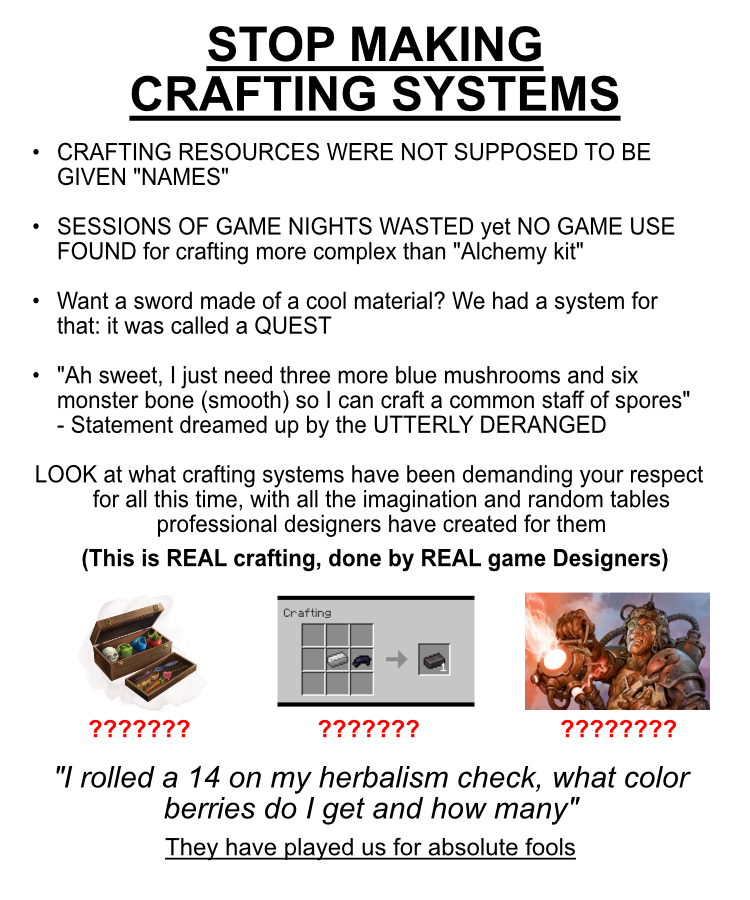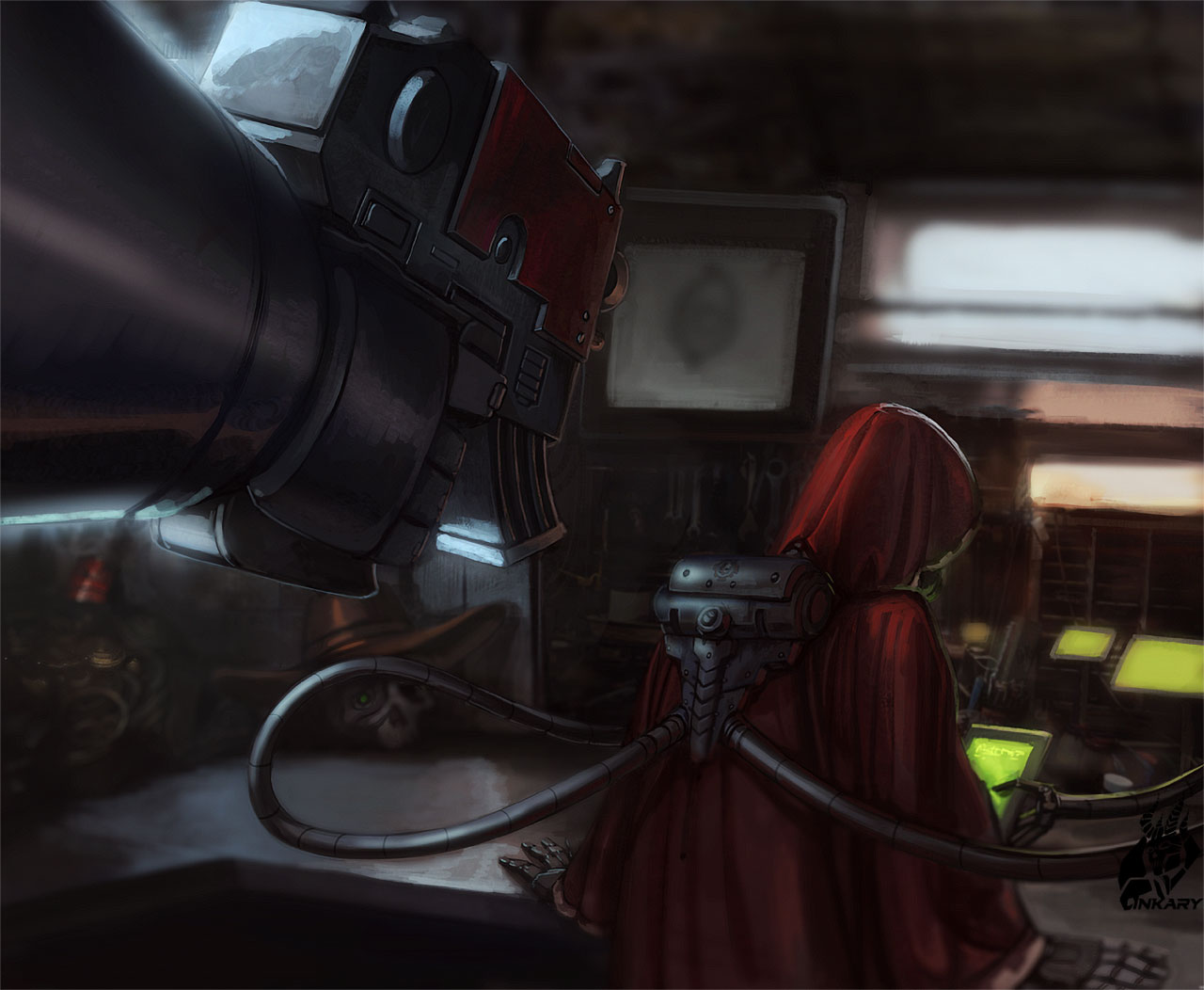Crafting Systems
I’ve been playing Tabletop Roleplaying games for a little over a decade and a half, and developing/modifying them for close to six or seven years. In that time I’ve seen a lot of similar mechanics implemented in vastly different ways. Interestingly, I've noticed that there are an unusually high number of homebrew rules for crafting systems, usually as a designers first tabletop project. I figured this would make for a good springboard to start talking about tabletop development, so let's take a look.
The most common approaches I've seen are usually based on crafting systems you might encounter in a video game. That is to say, you need specific resources, which can be combined to create other specific items. At this point, we've already run into a design problem when we consider the medium of a tabletop game. While the distribution of resources is something that a computer can handle automatically in something like an MMO, in a tabletop game it’s ultimately down to the dungeon master to describe what there is for players to interact with and facilitate their actions. This means that the more variety of resources a system has, the more work a dungeon master has to put into planning where they can be found. The actual process of collecting these crafting resources can also be difficult to fit naturally into the flow of a game, particuarly when you have players interrupting your train of thought by asking to make fungus harvesting checks because you stupidly put a mushroom covered log on the battlemap for decorative purposes, meaning you need to take a 5 minute break to go consult your list of mushrooms to figure out what genus you want to distribute in this area (and while you're doing that, you get a sinking feeling about the herb-shaped plants on your next map).

The point I must emphasize here isn’t that I think crafting rules can’t work in a tabletop game, but rather that a system must be designed so that it plays to the strengths of the tabletop medium, rather than the weaknesses. The best implementation of a crafting system I’ve seen was during a Dark Heresy campaign where we came up with a plan that involved the construction of a t-shirt cannon (it made sense at the time). The DM thought for a moment and made the ruling: “This guy sells boxes of junk. If you want to craft something, do a tech check and I’ll tell you how many boxes of junk it costs to make it”. This was a blast to play with because it skipped straight to the creative element of describing what we were making. Boxes of junk became a sought after resource in that campaign because depending on how we rolled on our checks, it enabled all sorts of alternate solutions to problems, with the DM adding special rulings if an idea seemed too outlandish.

The beauty of the box of junk approach is that it's easy to remember, use, and iterate on. Need a scope for a weapon? One junk box. Need to set a trap? One box of junk for a triggering device, and a weapon for the damage we wanted it to deal. If only having one resource for your crafting system sounds too boring, you could try implementing different sets of generalized resources to fit your campaign, or be more detailed in what the materials they gather look like (while not restricting their use in crafting). Have a setting where you think a custom potion brewing system would be cool? That’ll be 3 units of alchemical materials. Want to craft a sword in your downtime? That’ll be two boxes of crafting parts and an accessible forge. Oh you got those crafting parts when you asked the DM if you could loot that dragon skeleton four weeks ago? Sounds like you have a sword made of dragon bones. It’s really that easy folks.
The “Box of Junk” approach is great in that it plays to the strengths of a tabletop game. It turns computational work centered on a dungeon master into imaginative work spread among the players. A DM can easily say that the crafting resources are scarce if the players are trying to mass produce a particular item in abundance, and alter the difficulty of some crafting checks as needed. A skilled dungeon master might even say that a specific requirement for something a player really wants to craft can only be found in a specific location or from a specific creature, creating a plot-hook for their next adventure.
One of the interesting things is that when we compare this to the original crafting systems based on video game systems, we can see some similarities in how both systems accomplish the same goals. I think a fun exercise would be to consider what the effects would be of implementing a game mechanic into a different medium "as is". The box of junk approach wouldn't be as fun in a video game, due to the computer not having the creative capacity to handle the varying requests, and the recipe system from a video game would require too much work to run effectively at a tabletop game. Two different mediums, two different implementations, the same end goal.